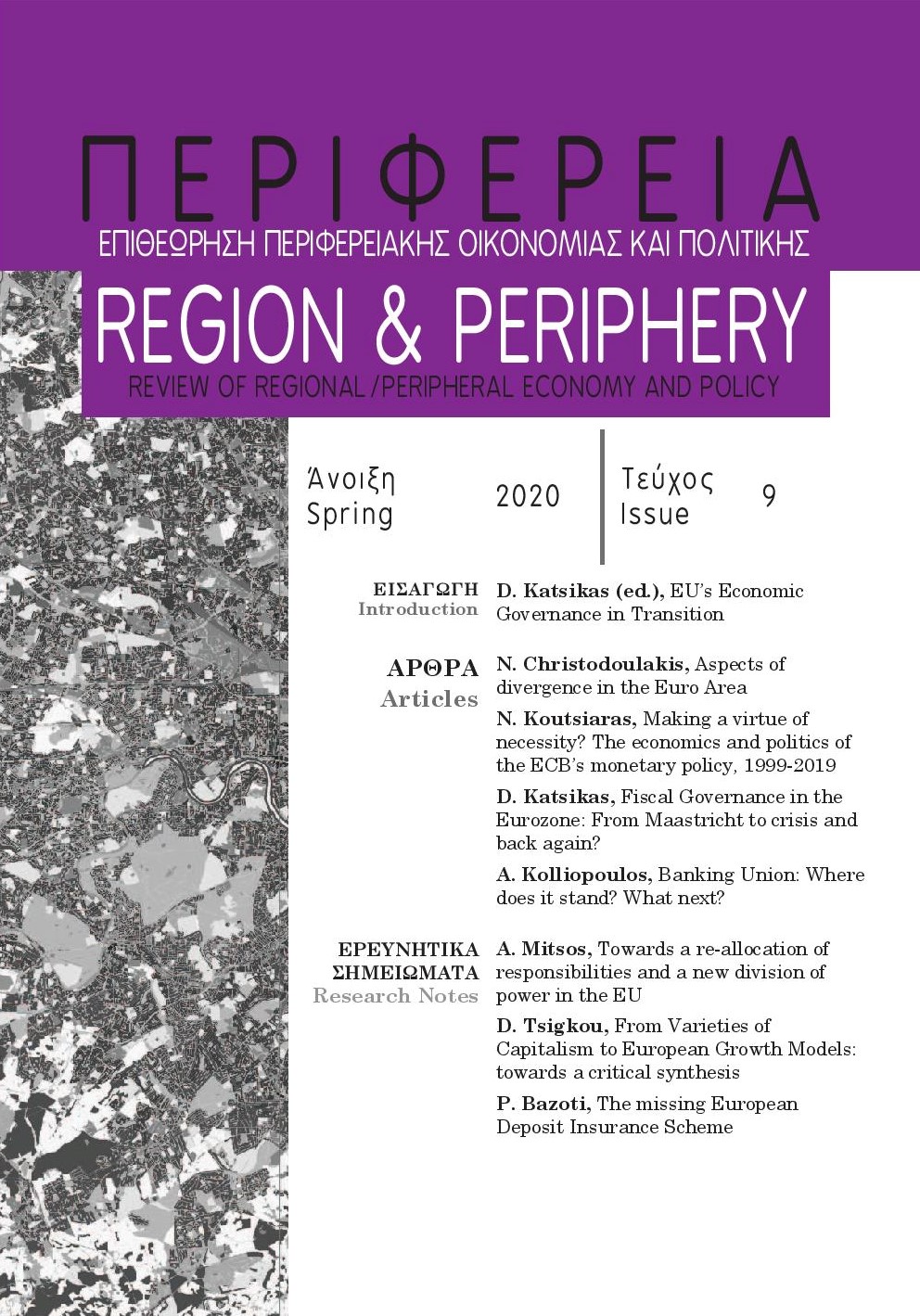Ζητήματα απόκλισης στην Ευρωζώνη
Περίληψη
Η εργασία εξετάζει πώς η διαδικασία σύγκλισης μεταξύ των λιγότερο και περισσότερο ανεπτυγμένων οικονομιών της Ευρωζώνης εξασθένισε μετά την κυκλοφορία του κοινού νομίσματος και, εν συνεχεία, αντιστράφηκε σε απόκλιση μετά την κρίση χρέους. Η εμπροσθοβαρής δημοσιονομική προσαρμογή που συνόδευσε τα προγράμματα δανειακής διάσωσης στις υπερχρεωμένες χώρες προκάλεσε ασύμμετρες απώλειες εισοδήματος και μεγέθυνε το χάσμα Βορρά-Νότου στην Ευρωζώνη. Οι αποκλίσεις ανάμεσα στις δύο ομάδες χωρών που είναι έντονες αφορούν το δημόσιο χρέος, τις επενδύσεις και την ποιότητα λειτουργίας των θεσμών, συμπιέζοντας έτσι τη δυναμική της ανάπτυξης και υπονομεύοντας τη σύγκλιση. Για να ξαναπάρει μπροστά η διαδικασία σύγκλισης των χωρών της Ευρωζώνης, χρειάζονται νέες πολιτικές οι οποίες ευνοούν την αύξηση των επενδύσεων και προάγουν την ταχύτερη θεσμική προσαρμογή των κρατών-μελών.
Λεπτομέρειες άρθρου
- Πώς να δημιουργήσετε Αναφορές
-
Χριστοδουλάκης Ν. (2020). Ζητήματα απόκλισης στην Ευρωζώνη. Περιφέρεια | Regional Integration: Politics, Economics, Governance, (9), 9–36. https://doi.org/10.12681/rp.23782
- Ενότητα
- Ερευνητικά Άρθρα

Αυτή η εργασία είναι αδειοδοτημένη υπό το CC Αναφορά Δημιουργού – Μη Εμπορική Χρήση 4.0.
Οι συγγραφείς των άρθρων που δημοσιεύονται στο περιοδικό διατηρούν τα δικαιώματα πνευματικής ιδιοκτησίας επί των άρθρων τους, δίνοντας στο περιοδικό το δικαίωμα της πρώτης δημοσίευσης.
Άρθρα που δημοσιεύονται στο περιοδικό διατίθενται με άδεια Creative Commons 4.0 Non Commercial και σύμφωνα με την άδεια μπορούν να χρησιμοποιούνται ελεύθερα, με αναφορά στο/στη συγγραφέα και στην πρώτη δημοσίευση για μη κερδοσκοπικούς σκοπούς.
Οι συγγραφείς μπορούν να καταθέσουν το άρθρο σε ιδρυματικό ή άλλο αποθετήριο ή/και να το δημοσιεύσουν σε άλλη έκδοση, με υποχρεωτική την αναφορά πρώτης δημοσίευσης στο περιοδικό Περιφέρεια.
Οι συγγραφείς ενθαρρύνονται να καταθέσουν σε αποθετήριο ή να δημοσιεύσουν την εργασία τους στο διαδίκτυο πριν ή κατά τη διαδικασία υποβολής και αξιολόγησής της.



